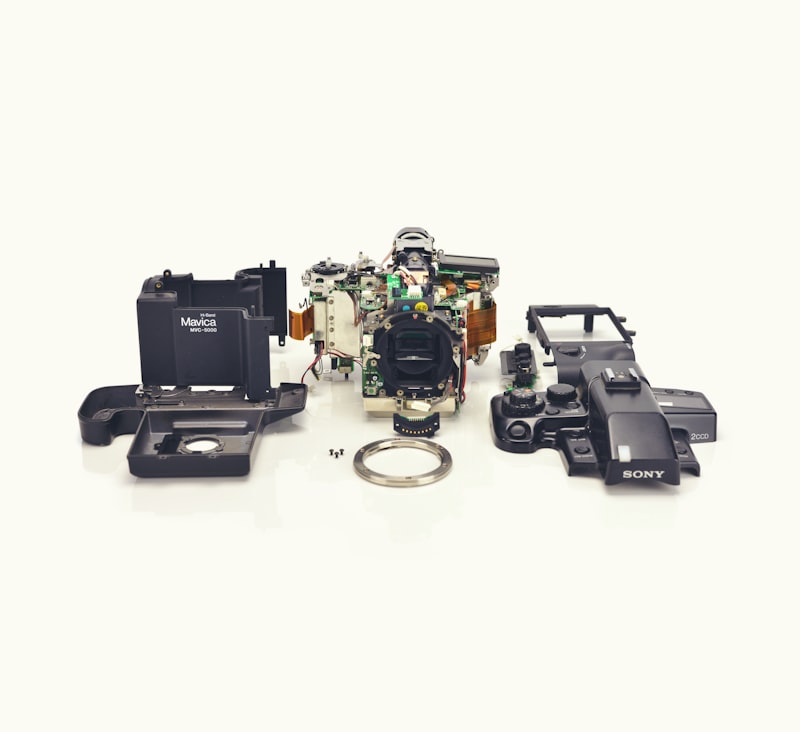
Firstly, assess the damage. Look closely at the trim around your windshield. Is it cracked, faded, or loose? Understanding the extent of the damage will help you determine the best approach to repair it. Sometimes a simple cleaning and tightening might suffice, while other times you might need to consider more extensive repairs.
Cleaning is often the first step. Use a gentle cleaner and a soft cloth to remove dirt, grime, and debris from the trim. This not only improves the trim’s appearance but also prepares it for any subsequent repair work. Make sure to dry it thoroughly afterwards to prevent water damage.
For minor cracks or chips in the trim, consider using a trim adhesive or sealant. These products are designed specifically for automotive trim and can effectively bond the trim back together. Apply the adhesive according to the manufacturer’s instructions and allow sufficient drying time before exposing it to moisture or extreme temperatures.
In cases where the damage is more severe, such as extensive cracking or warping, replacement might be necessary. Look for replacement trim pieces that match your vehicle’s make and model. You can often find these parts at auto parts stores or through your vehicle manufacturer. Replacing the trim can significantly improve both the aesthetics and functionality of your windshield.
After repairing or replacing the trim, consider applying a protective coating. This can help prevent future damage from UV rays, moisture, and debris. Look for a product that is specifically designed for automotive trim and apply it according to the manufacturer’s instructions.
Revamp Your Ride: Expert Tips for Restoring Car Windshield Trim
When embarking on the restoration of your car’s windshield trim, several expert tips can help achieve optimal results. Firstly, cleaning the trim thoroughly is crucial. Use a gentle automotive cleaner and a soft cloth to remove any dirt, grime, or residue that has accumulated. This initial step prepares the surface for further restoration processes.
Next, assessing the condition of the trim is essential. Look for signs of fading, discoloration, or even cracks. Depending on the severity of the damage, you may choose different restoration methods. For mildly faded trim, using a quality trim restorer can bring back its original shine. Products with UV protection are particularly beneficial as they help prevent future sun damage.
For more damaged trim, consider using a plastic trim restoration kit. These kits often include cleaners, conditioners, and applicators designed specifically for automotive trim. Follow the manufacturer’s instructions carefully to achieve the best results.
Applying a protective coating after restoration is advisable to maintain the trim’s renewed appearance. Look for a product that offers UV protection and is suitable for the specific type of trim material your vehicle has. This final step not only enhances the aesthetics but also prolongs the longevity of the restoration efforts.
Restoring your car’s windshield trim can significantly enhance its overall appearance and protect it from future damage. By following these expert tips and investing a little time and effort, you can achieve a rejuvenated look that adds value to your vehicle.
DIY Magic: How to Fix Cracked Windshield Trim Like a Pro
Have you ever noticed those unsightly cracks in your windshield trim that seem to appear out of nowhere? Fixing them like a pro doesn’t have to be daunting. With a bit of DIY magic and the right approach, you can restore your cracked windshield trim easily and affordably.
Firstly, assess the damage: inspect the trim thoroughly to understand the extent of the cracks. Often, these cracks are superficial and can be fixed without replacing the entire trim. This saves both time and money.
Next, gather your tools: you’ll need a high-quality adhesive that bonds well with the trim material, a clean cloth, and some masking tape. These simple items can make a world of difference in achieving a professional-looking repair.
Prepare the area: clean the cracked trim with a mild soap solution and dry it thoroughly. This ensures that the adhesive bonds effectively and the repair lasts longer.
Apply the adhesive: carefully apply a small amount of adhesive along the crack, ensuring it fills the gap completely. Use masking tape to hold the trim in place while the adhesive sets. Allow sufficient drying time as per the adhesive manufacturer’s instructions.
Finish with finesse: once the adhesive has cured, remove the masking tape and gently polish the repaired area with a clean cloth. This step enhances the trim’s appearance and blends the repair seamlessly into the surrounding surface.
Voila! Your cracked windshield trim is now restored, and it looks as good as new. DIY repairs not only save you money but also empower you to tackle small automotive issues with confidence. Remember, with a steady hand and the right materials, fixing cracked windshield trim can be a satisfying and effective DIY project.
Crucial Steps: Repairing Car Windshield Trim Made Easy
Firstly, inspect the trim carefully. Look for any signs of damage such as cracks, discoloration, or looseness. This initial inspection sets the stage for understanding the extent of repair needed.
Next, gather the necessary tools and materials. You’ll typically require replacement trim pieces, adhesive or sealant, cleaning supplies, and possibly tools like screwdrivers or trim removal tools depending on your vehicle’s make and model.
Now, prepare the area. Clean the windshield and the surrounding trim thoroughly to ensure a proper bond with the new trim. Remove any old adhesive or debris that could hinder the installation process.
Proceed with installation. Carefully place the new trim in position, ensuring it aligns perfectly with the windshield’s edge. Apply the adhesive as per the manufacturer’s instructions, pressing firmly to secure the trim in place. Allow sufficient time for the adhesive to cure completely.
Finally, inspect the repair. Once the adhesive has cured, inspect the newly installed trim to ensure it sits flush against the windshield without any gaps or misalignments. This final inspection guarantees that the repair is not only functional but also aesthetically pleasing.
By following these crucial steps, repairing your car’s windshield trim becomes an achievable task that restores both the look and integrity of your vehicle. With attention to detail and the right materials, you can ensure your car continues to make a great impression on the road.
Save Money, Drive Safe: Essential Techniques for DIY Trim Repair
Repairing your vehicle’s trim not only restores its appearance but also ensures safety on the road. DIY trim repair can save you significant money while keeping your car in top shape. Here’s a guide to mastering essential techniques for this task.
Before diving into repairs, assess the extent of the damage. Look for cracks, scratches, or loose parts in the trim. Identifying these issues early helps prevent further damage to your vehicle.
Equip yourself with the necessary tools and materials. You’ll typically need sandpaper, a heat gun or hair dryer, adhesive, primer, paint (matching your car’s color), and clear coat. These items ensure you’re prepared for various types of repairs.
Clean the damaged area thoroughly to remove dirt and grime. Use soap and water, followed by a degreaser if needed. Smooth rough edges with sandpaper to create a clean surface for repairs.
For minor scratches and chips, sand the area lightly and apply touch-up paint. Use a steady hand and multiple thin layers to blend the paint seamlessly. For larger cracks or loose trim, use adhesive to secure the trim back in place. A heat gun or hair dryer can help mold the trim to its original shape.
Once the adhesive is set, apply primer to the repaired area. Let it dry completely before applying the matching paint. Use even strokes to ensure a smooth finish. Finish with a clear coat for added protection and shine.
After repair, allow sufficient time for everything to dry and set properly. Regularly inspect your vehicle’s trim to catch any new damage early. Prompt repairs prevent more extensive and costly fixes down the road.
Mastering DIY trim repair not only saves you money but also enhances your vehicle’s safety and appearance. By following these essential techniques and staying proactive with maintenance, you can keep your car looking great and running safely for years to come.
From Shabby to Chic: Transform Your Car with Windshield Trim Repair

Is your car’s windshield trim looking worn out and dull? Over time, exposure to sunlight and weather elements can cause the trim around your windshield to fade and crack, making your car look less appealing. However, there’s good news – you can easily transform your car from shabby to chic with windshield trim repair!
Windshield trim plays a crucial role in maintaining the integrity of your car’s windshield. Not only does it enhance the aesthetic appeal of your vehicle, but it also provides protection against water leakage and wind noise. When the trim starts to deteriorate, it not only affects the overall look of your car but also compromises its functionality.
Repairing your windshield trim is a cost-effective way to breathe new life into your vehicle. Whether it’s replacing the weathered rubber seal or refinishing the plastic trim, professional repair services can make a significant difference. Imagine how sleek and polished your car will look with revitalized trim that complements its design!
By investing in windshield trim repair, you’re not just enhancing the appearance of your car; you’re also prolonging its lifespan. A well-maintained trim ensures better insulation and weather resistance, making your driving experience quieter and more comfortable. It’s a small change that can make a big impact on how you feel about your vehicle.
So, why wait? Take the first step towards transforming your car today. Explore professional windshield trim repair services and see how easy it is to achieve a chic, stylish look for your vehicle. Treat your car to the care it deserves and enjoy the benefits of a refreshed appearance and improved functionality.
Ready to turn heads with your sleek, revitalized car? Start with windshield trim repair and discover the difference it makes!
This article aims to inform and persuade car owners about the benefits of repairing their windshield trim, emphasizing both aesthetic and functional improvements in a conversational and engaging manner.
Frequently Asked Questions
What are the steps to replace windshield trim on a car?
Learn the steps to replace the windshield trim on your car with our concise guide. Follow step-by-step instructions to safely remove the old trim, clean the area, fit the new trim securely, and ensure a professional finish.
What tools do I need to repair car windshield trim effectively?
Learn about the essential tools required for effectively repairing car windshield trim, ensuring a smooth and professional finish.
What are common causes of windshield trim damage and how can I prevent it?
Learn about common causes of windshield trim damage and effective prevention methods. Discover insights on protecting your vehicle’s trim from environmental factors and wear.
How can I repair cracked or damaged windshield trim myself?
Learn how to repair cracked or damaged windshield trim yourself with our concise guide. Discover step-by-step instructions and essential tips to achieve professional results at home.
Can I paint my car’s windshield trim after repair?
Yes, you can paint your car’s windshield trim after repair. It’s important to ensure the surface is properly prepared by cleaning and sanding it to create a smooth base for the paint. Use automotive-grade primer and paint suitable for plastic or metal surfaces to achieve a durable finish. Follow manufacturer instructions and consider professional help for best results.


